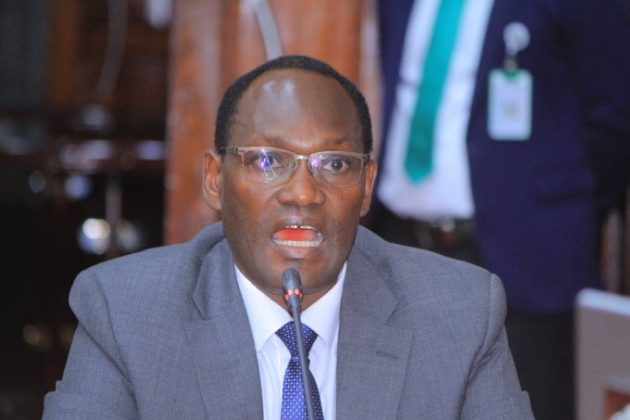
Government Cuts Projections by Sh105 Billion Amid Economic Challenges
The Kenyan government’s decision to reduce its anticipated additional tax revenue for 2024/2025 underscores the complex financial landscape the country faces. Initially projecting an increase of Sh174.6 billion, the government has now revised this figure to Sh70 billion—a reduction of 59.9%. This adjustment raises critical questions about tax policy efficacy, revenue collection challenges, and the broader economic implications.
As the government grapples with fiscal deficits, debt obligations, and social unrest, understanding the interplay of these elements is essential. This article dissects the reasons behind the shortfall, its ramifications, and possible solutions, offering a comprehensive perspective on Kenya’s economic challenges.
Revised Revenue Projections
Initially, the government anticipated raising Sh174.6 billion through the Tax Laws (Amendment) Act 2024, the Tax Procedures (Amendment) Act 2024, and the Business Laws (Amendment) Act 2024. However, according to National Treasury Principal Secretary Chris Kiptoo, these expectations have been scaled down to approximately Sh70 billion. This substantial reduction of 59.9% highlights the hurdles faced in implementing effective tax measures.
“We have implemented the budget and ended up in January this year with an under-performance in revenue of about Sh92.6 billion. Revenues have not performed as we would have wanted,” stated PS Kiptoo during an economic forum organized by Diamond Trust Bank.
Key Drivers of the Revenue Shortfall
1. Rejected Tax Measures
The Tax Laws (Amendment) Act 2024, alongside other proposed legislation, aimed to introduce significant changes to revenue collection. However, not all proposed measures were passed by Parliament, limiting the government’s ability to meet its initial targets.
Key measures that failed to gain approval included:
- Tax hikes on essential goods: These sparked widespread public backlash.
- Corporate tax increases: Rejected due to concerns over their impact on business growth.
2. Economic Slowdown
Kenya’s economic growth has been hampered by:
- Protests and disruptions: Anti-government demonstrations have affected productivity and investor confidence.
- Global economic pressures: Rising interest rates and inflation globally have compounded local challenges.
These disruptions led to a significant underperformance in revenue collection during the first half of the financial year.
3. KRA Underperformance
The Kenya Revenue Authority (KRA) collected Sh1.07 trillion in the first half of the financial year, missing its target by Sh163.46 billion. Key factors behind this shortfall include:
- Inefficient enforcement of tax compliance.
- Widespread tax evasion.
- Inadequate use of modern technologies for tax administration.
Fiscal Implications of the Shortfall
1. Widening Budget Deficit
The National Treasury reported a budget deficit of Sh270 billion for the nine months leading up to March 2024. This gap stems from:
- Ordinary revenue underperformance: Falling short of budgetary projections.
- Increased borrowing: Widening the debt-to-GDP ratio.
2. Credit Downgrades
Major credit rating agencies have lowered Kenya’s ratings, reflecting increased risks to public finances.
- Fitch Ratings: Downgraded Kenya to “B-” in August 2024, citing weakened fiscal policies.
- S&P Global Ratings: Reduced Kenya’s rating from “B” to “B-” due to the reversal of critical revenue measures.
3. Economic Growth Revisions
The World Bank has adjusted Kenya’s growth forecast for 2024 from 5.0% to 4.7%, attributing the reduction to:
- Social unrest.
- Fiscal challenges.
- Natural calamities, including floods.
Broader Economic Impacts
1. Public Debt Levels
Kenya’s public debt has exceeded recommended thresholds, posing risks to fiscal sustainability. High debt servicing costs now consume over 60% of government revenue, leaving little room for development spending.
2. Declining Investor Confidence
The reversal of the Finance Bill 2024 amid public protests has made investors wary of Kenya’s fiscal stability. Long-dated government bonds are now less attractive, exacerbating funding challenges.
3. Social Unrest and Public Trust
The protests following proposed tax hikes resulted in over 50 deaths, highlighting widespread dissatisfaction with government policies. This unrest underscores the need for more inclusive and transparent policymaking.
Government’s Response
1. Public Consultations
To rebuild trust, the government has initiated public forums to seek input on tax laws. Finance Minister John Mbadi emphasized the importance of transparency in addressing fiscal challenges.
2. Improved Tax Administration
Rather than introducing new taxes, experts recommend strengthening existing mechanisms. The Parliamentary Budget Office advocates for:
- Leveraging data analytics to track tax compliance.
- Deploying digital solutions to minimize evasion.
- Enhancing training for KRA personnel.
3. Spending Cuts and Borrowing
To bridge the deficit, the government has:
- Reduced non-essential spending.
- Sought external funding, including IMF support.
Challenges and Opportunities
1. Balancing Fiscal Discipline and Growth
While austerity measures may stabilize the budget, they risk stifling economic growth. Striking a balance between fiscal discipline and development spending is critical.
2. Strengthening Institutional Capacity
Building a robust tax administration system requires investment in technology, training, and data-driven decision-making. These measures can improve efficiency and compliance.
3. Diversifying Revenue Sources
Kenya must explore alternative revenue streams, such as:
- Expanding the tax base through formalizing the informal sector.
- Promoting public-private partnerships for infrastructure projects.
- Encouraging foreign direct investment.
A Path Forward: Key Recommendations
- Stakeholder Collaboration: Policymakers, businesses, and civil society must work together to design fair and effective tax policies.
- Enhanced Transparency: Open communication about fiscal challenges can rebuild public trust.
- Focus on Long-Term Solutions: Investing in infrastructure, education, and healthcare can drive sustainable economic growth.
Kenya’s revised tax revenue projections reflect the broader economic challenges facing the nation. While the shortfall underscores the limitations of current fiscal policies, it also highlights opportunities for reform and innovation. By prioritizing transparency, efficiency, and collaboration, the government can navigate this complex landscape and lay the groundwork for a more resilient economy.
Read: How the World Bank’s KSh10 Bn Deal Is Lighting Up Marginalized Homes
Frequently Asked Questions (FAQs)
Why did Kenya reduce its expected tax revenue by Sh105 billion?
The reduction stems from various factors, including rejected tax proposals, underperformance in tax collection, and economic disruptions such as protests and slower economic growth.
What is the Tax Laws (Amendment) Act 2024, and how does it relate to the shortfall?
The Tax Laws (Amendment) Act 2024 was one of the proposed measures to increase revenue. However, not all provisions were approved by Parliament, limiting the government’s ability to meet its revenue targets.
How has the tax revenue shortfall affected Kenya’s budget?
The shortfall has widened the budget deficit to Sh270 billion, forcing the government to cut spending and increase borrowing, further straining public finances.
What are the implications of Kenya’s credit rating downgrade?
Credit downgrades by Fitch and S&P indicate weakened fiscal policies and increased risks to public finances. This can deter investors and raise borrowing costs for the government.
What steps is the government taking to address the shortfall?
The government is focusing on public consultations for new tax laws, improving tax administration, and implementing spending cuts. It is also exploring external borrowing to manage the deficit.
How does this revenue shortfall affect ordinary Kenyans?
The shortfall could lead to reduced funding for public services, potential tax increases, and higher costs of living as the government seeks alternative ways to balance the budget.
What role does the Kenya Revenue Authority (KRA) play in this shortfall?
The KRA missed its revenue collection target by Sh163.46 billion in the first half of the financial year due to inefficiencies in enforcement, tax evasion, and inadequate technological adoption.
How can Kenya improve its tax collection and avoid future shortfalls?
Enhancing tax compliance through better administration, leveraging technology, and expanding the tax base to include the informal sector are key strategies to improve revenue collection.
Why did the Finance Bill 2024 face public opposition?
The Finance Bill proposed tax increases on essential goods and services, sparking widespread protests and concerns about affordability for ordinary citizens.
What is the outlook for Kenya’s economy in light of the revenue shortfall?
The World Bank has revised Kenya’s economic growth projection for 2024 downward to 4.7%. The government must address fiscal challenges and restore investor confidence to improve the outlook.




